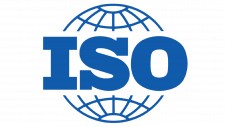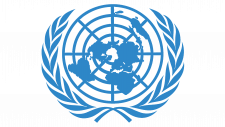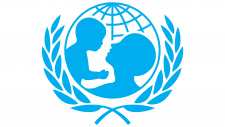United Way Logo
United Way stands as a beacon of hope, uniting communities to tackle pressing social issues. The journey began with a visionary group of community leaders who sought to make a difference. Denver became the birthplace of this noble initiative. They aimed to consolidate local charities, coordinate relief services, and conduct a single fundraising campaign for all. United Way emerged from the desire to create a stronger, more unified approach to help those in need. This organization channels the power of communities to ignite change and provide support where it’s most needed.
Meaning and history
United Way’s roots trace back to 1887, marking its inception as a pioneering force in community-based support. This year symbolized the start of a collective effort to address societal challenges. Over the decades, United Way has marked numerous milestones. It evolved, reflecting the changing needs and expanding its reach to serve broader communities. Not just a local initiative, it now operates on a global scale, adapting and innovating to meet the ever-changing demands of the communities it serves. United Way’s history is a testament to the enduring power of collective action and compassion.
What is United Way?
United Way is a global network of nonprofit organizations. It focuses on solving critical social issues through community-based solutions. By mobilizing resources and fostering partnerships, United Way strives to improve lives and create lasting changes in communities worldwide. This organization embodies the spirit of giving, advocacy, and volunteerism, making a tangible impact on the lives of millions.
1922 – 1952
The logo presents a message of altruism with vintage flair. A bold, commanding “Give” anchors the design. Below, a quill symbolizes classic communication and personal touch. “Through your” appears in smaller print, bridging the call to action with “COMMUNITY CHEST” in a strong, solid font. The phrase invites personal involvement. The quill, detailed with its feather structure, adds an artistic touch to the motif, evoking the timeless act of writing. This black and white design merges simplicity with a profound message, urging community giving.
1952 – 1970
The logo captivates with stark minimalism and geometric design. “UNITED” boldly asserts itself atop, with the ‘U’ descending into a cascade of lines. These lines suggest unity and strength, flowing together to form a resilient structure. The typography is hefty, imposing, and utterly unmissable. Black dominates the palette, imparting gravitas and seriousness to the message. This graphic simplicity serves a powerful symbol of togetherness, resonating with the ethos of unity. The logo eschews complexity for a clear, powerful representation of collective action.
1970 – 1972
This iteration of the logo introduces dynamic complexity. “United Way of America” interlocks in a bold dance of typography. Each letter shares its space with another, symbolizing interconnectedness and collaboration. The stark black and white color scheme remains, maintaining the logo’s authoritative presence. This design speaks to unity not only in name but also in form, as it visually unifies the text into a cohesive whole. The graphic balance achieved here reflects the organization’s cohesive nationwide efforts.
1972 – 2004
Color and symbolism burst forth in this evolution. The logo transitions from stark black and white to a vibrant spectrum. Warm hues arch like a sunrise over a protective hand, cradling a human figure. This emblem of care and community radiates optimism. The hand, depicted in calming blue, conveys trust and support. The figure within the embrace stands out in red, a universal beacon of humanity. Below, the “United Way” text is modern, clean, and approachable. This logo illustrates a human-centric mission, with the colors symbolizing a brighter future fostered by unity and compassion.
2004 – 2024
The logo now splits into two distinct halves, each with its own color and design. On the left, a bold, all-caps “United Way” sits on a deep blue background, signaling clarity and trust. The right side features the iconic image of the human figure embraced by the hand against a backdrop of warm, radiating arcs, encapsulated within a circle. This suggests global reach and inclusivity. The color palette is more refined, with a harmonious blend of blue, orange, and white, emphasizing warmth, care, and stability. The logo’s division symbolizes the partnership of organization and community, working in tandem for a united cause.
2024 – Today
The version, created for the United Way brand in 2024, is more progressive and laconic than the previous badge, however, has all the recognizable components kept. The blue background was removed, and the wordmark changed places with the emblem, which is now set on the left of the field, with intensified colors and enlarged elements. The lettering uses a bright shade of blue for its capital characters, executed in a narrowed and distinctive sans-serif font with straight cuts of the lines.

















